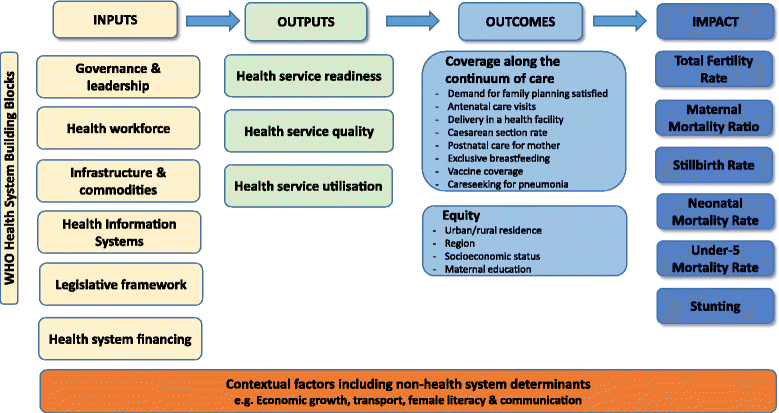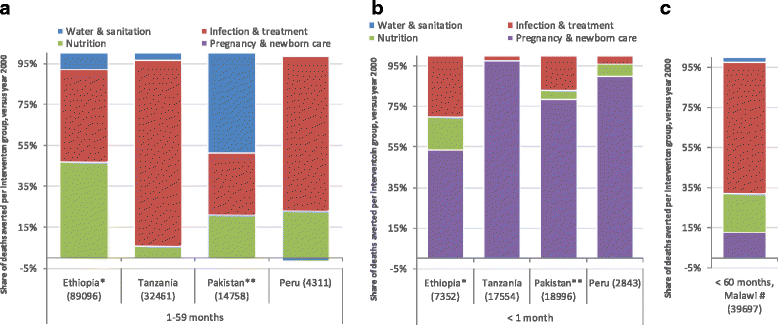Countdown to 2015 country case studies: what have we learned about processes and progress towards MDGs 4 and 5?
- PMID: 27633919
- PMCID: PMC5025828
- DOI: 10.1186/s12889-016-3401-6
Countdown to 2015 country case studies: what have we learned about processes and progress towards MDGs 4 and 5?
Abstract
Background: Countdown to 2015 was a multi-institution consortium tracking progress towards Millennium Development Goals (MDGs) 4 and 5. Case studies to explore factors contributing to progress (or lack of progress) in reproductive, maternal, newborn and child health (RMNCH) were undertaken in: Afghanistan, Bangladesh, China, Ethiopia, Kenya, Malawi, Niger, Pakistan, Peru, and Tanzania. This paper aims to identify cross-cutting themes on how and why these countries achieved or did not achieve MDG progress.
Methods: Applying a standard evaluation framework, analyses of impact, coverage and equity were undertaken, including a mixed methods analysis of how these were influenced by national context and coverage determinants (including health systems, policies and financing).
Results: The majority (7/10) of case study countries met MDG-4 with over two-thirds reduction in child mortality, but none met MDG-5a for 75 % reduction in maternal mortality, although six countries achieved >75 % of this target. None achieved MDG-5b regarding reproductive health. Rates of reduction in neonatal mortality were half or less that for post-neonatal child mortality. Coverage increased most for interventions administered at lower levels of the health system (e.g., immunisation, insecticide treated nets), and these experienced substantial political and financial support. These interventions were associated with ~30-40 % of child lives saved in 2012 compared to 2000, in Ethiopia, Malawi, Peru and Tanzania. Intrapartum care for mothers and newborns -- which require higher-level health workers, more infrastructure, and increased community engagement -- showed variable increases in coverage, and persistent equity gaps. Countries have explored different approaches to address these problems, including shifting interventions to the community setting and tasks to lower-level health workers.
Conclusions: These Countdown case studies underline the importance of consistent national investment and global attention for achieving improvements in RMNCH. Interventions with major global investments achieved higher levels of coverage, reduced equity gaps and improvements in associated health outcomes. Given many competing priorities for the Sustainable Development Goals era, it is essential to maintain attention to the unfinished RMNCH agenda, particularly health systems improvements for maternal and neonatal outcomes where progress has been slower, and to invest in data collection for monitoring progress and for rigorous analyses of how progress is achieved in different contexts.
Keywords: Accountability; Child health; Coverage; Equity; Health finance; Health systems; Maternal health; Millennium Development Goals; Neonatal health; Reproductive health.
Figures








References
-
- Victora CG, Requejo JH, Barros AJD, Berman P, Bhutta Z, Boerma T, Chopra M, de Francisco A, Daelmans B, Hazel E, et al. Countdown to 2015: a decade of tracking progress for maternal, newborn, and child survival. Lancet. 2015;387(10032):2049–59. doi: 10.1016/S0140-6736(15)00519-X. - DOI - PMC - PubMed
MeSH terms
LinkOut - more resources
Full Text Sources
Other Literature Sources
Medical
Miscellaneous

